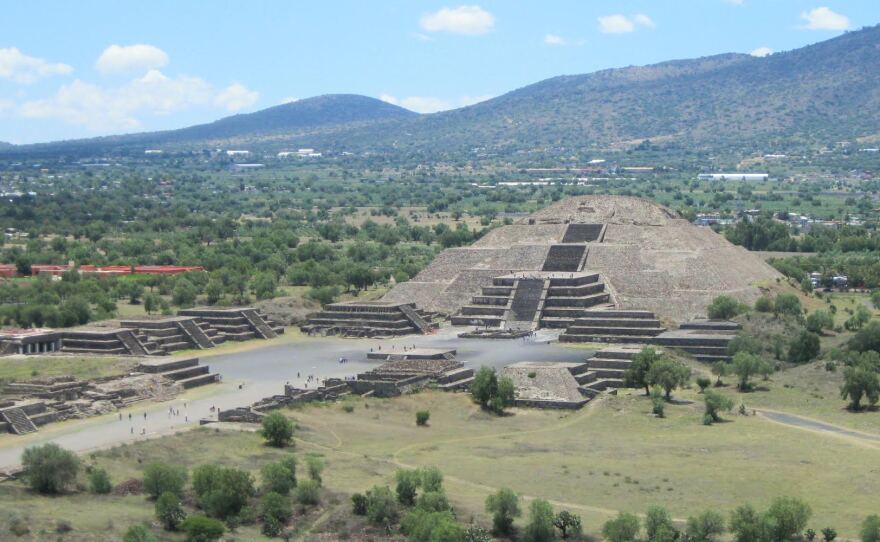When you think of ancient Mexico, you probably picture huge pyramids, colossal sculptures and complex calendars carved in stone. A new study published Wednesday suggests you should also picture people tending to rabbits.
Unlike ancient Europeans, pre-Hispanic civilizations didn't have access to large animals like cows or sheep. But they may have kept rabbits, according to new evidence unearthed at the ancient city of Teotihuacan.
"They were breeding rabbits as a form of specialized labor," said UC San Diego's Andrew Somerville, who led the team of anthropologists that made the discovery.
"It seemed to be that there were centers of food production in the city," Somerville said. "Which is a pretty interesting discovery, because it tells us something about how the economy of the city was organized."
Teotihuacan was a massive city near present-day Mexico City active from roughly AD 1 to 550. Somerville and his colleagues focused on a large concentration of rabbit bones found in rooms within one apartment complex. This facility has also shown signs of butchering, and it featured a rabbit sculpture in the public courtyard.

The researchers analyzed carbon isotopes in the rabbit bones, which were over 1,400 years old. They found chemical signatures in the bones revealing that these rabbits ate a diet unusually high in farmed crops like corn and cactus, suggesting they were fed by people.
"Those are chemically very distinct from almost all the other food in the landscape," Somerville said. "So it shows up very visibly in the bones. We could calculate fairly accurately how much human foods these rabbits were eating."
The rabbits may have been bred for their meat, fur and bones, which would have been useful for fashioning tools. Somerville thinks the animals were likely brought into those apartments to be slaughtered. He said these signs of centralized rabbit processing point toward an economy that may have been more complex than previously thought.
"Once you have families that aren't responsible for making their own food anymore, that's a whole different level of complexity," Somerville said.
"The research is very sound," said Dartmouth College anthropology professor Deborah Nichols, an expert on pre-Hispanic civilizations who was not involved in the study. "Finding that rabbits were being raised and fed reveals a previously unknown form of urban animal husbandry."
Nichols wrote in an email, "Understanding the nature of Teotihuacan's food supply is important to understand the development of this ancient city that became the most influential center in Mexico and Central America."
Protein consumption in the pre-Hispanic Mexican diet has been the subject of some debate, Somerville said. Earlier scholars have even gone so far as to claim these civilizations practiced cannibalism due to a lack of animal protein.
"One implication of this rabbit study is that they were able to acquire enough protein," Somerville said. "This economic specialization was a way of adapting to this somewhat marginal environment they were living in."






